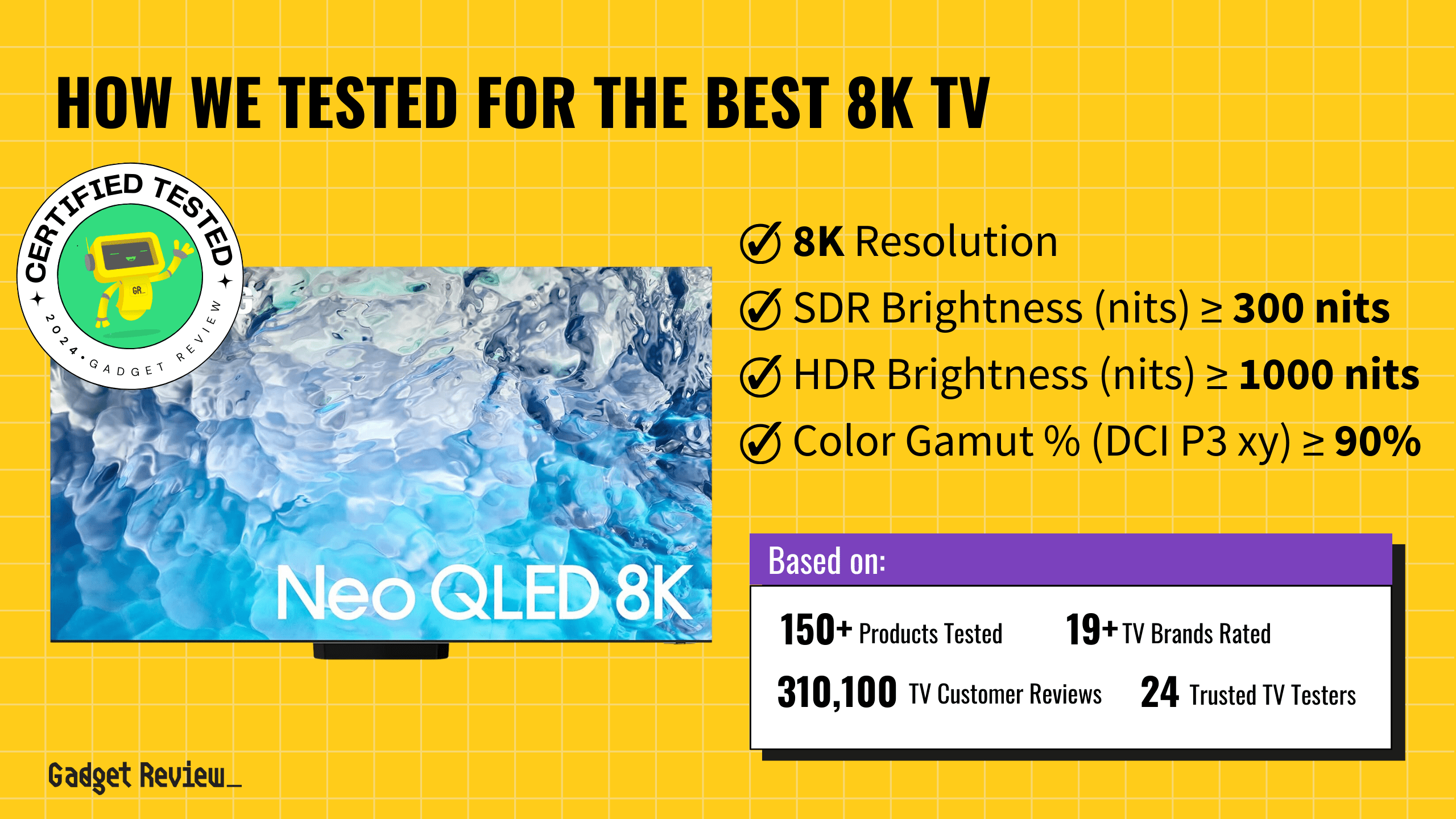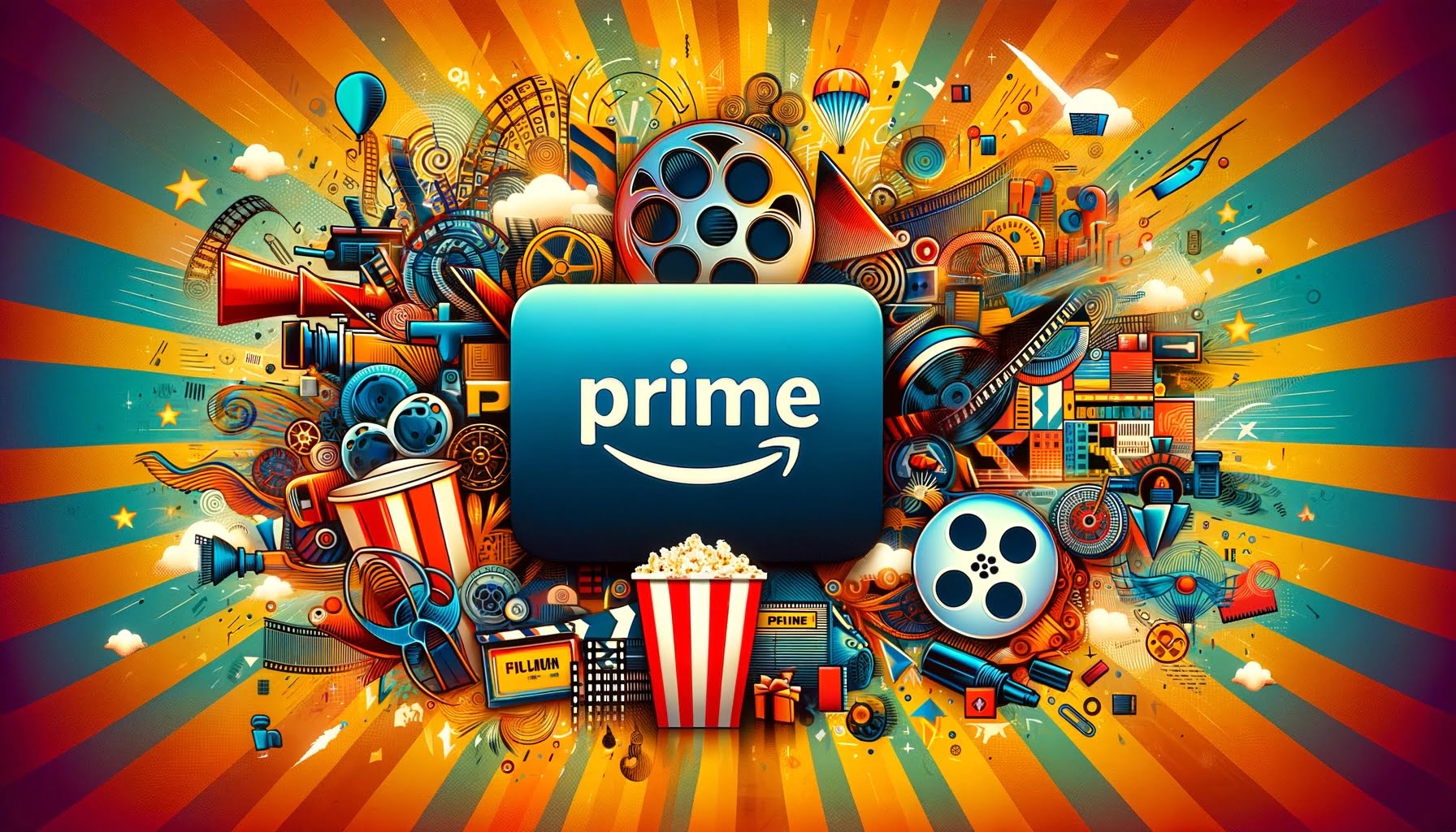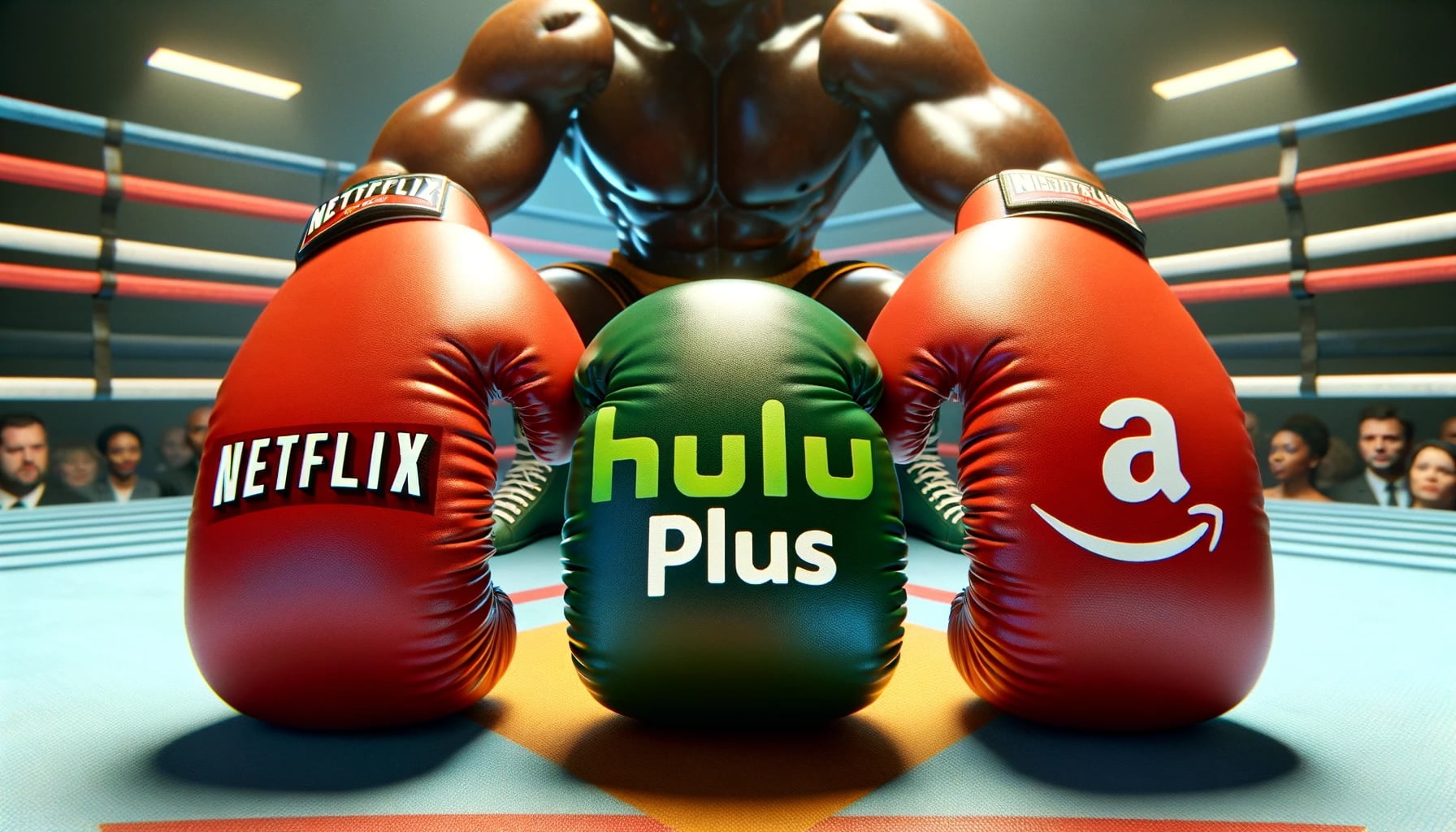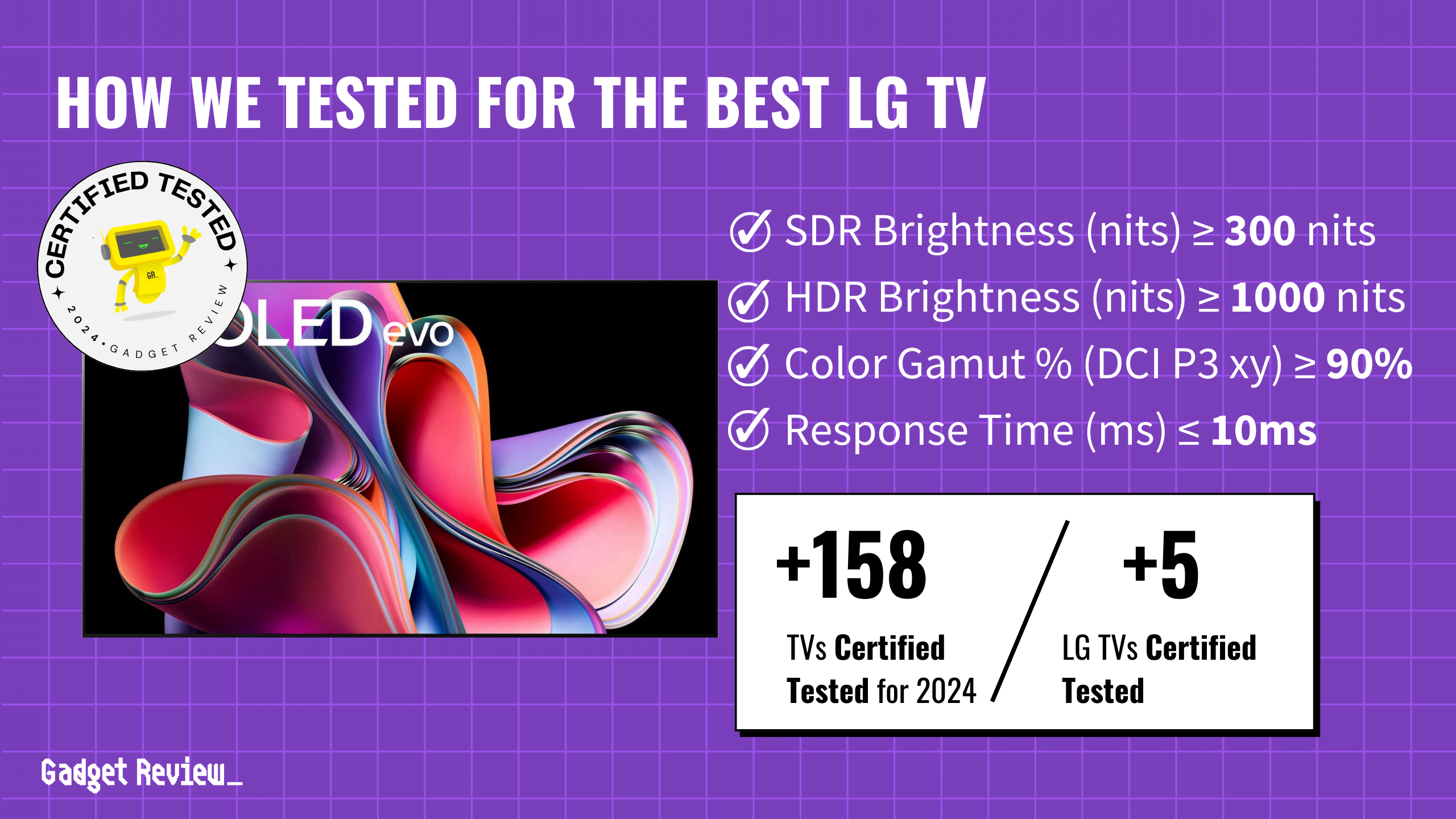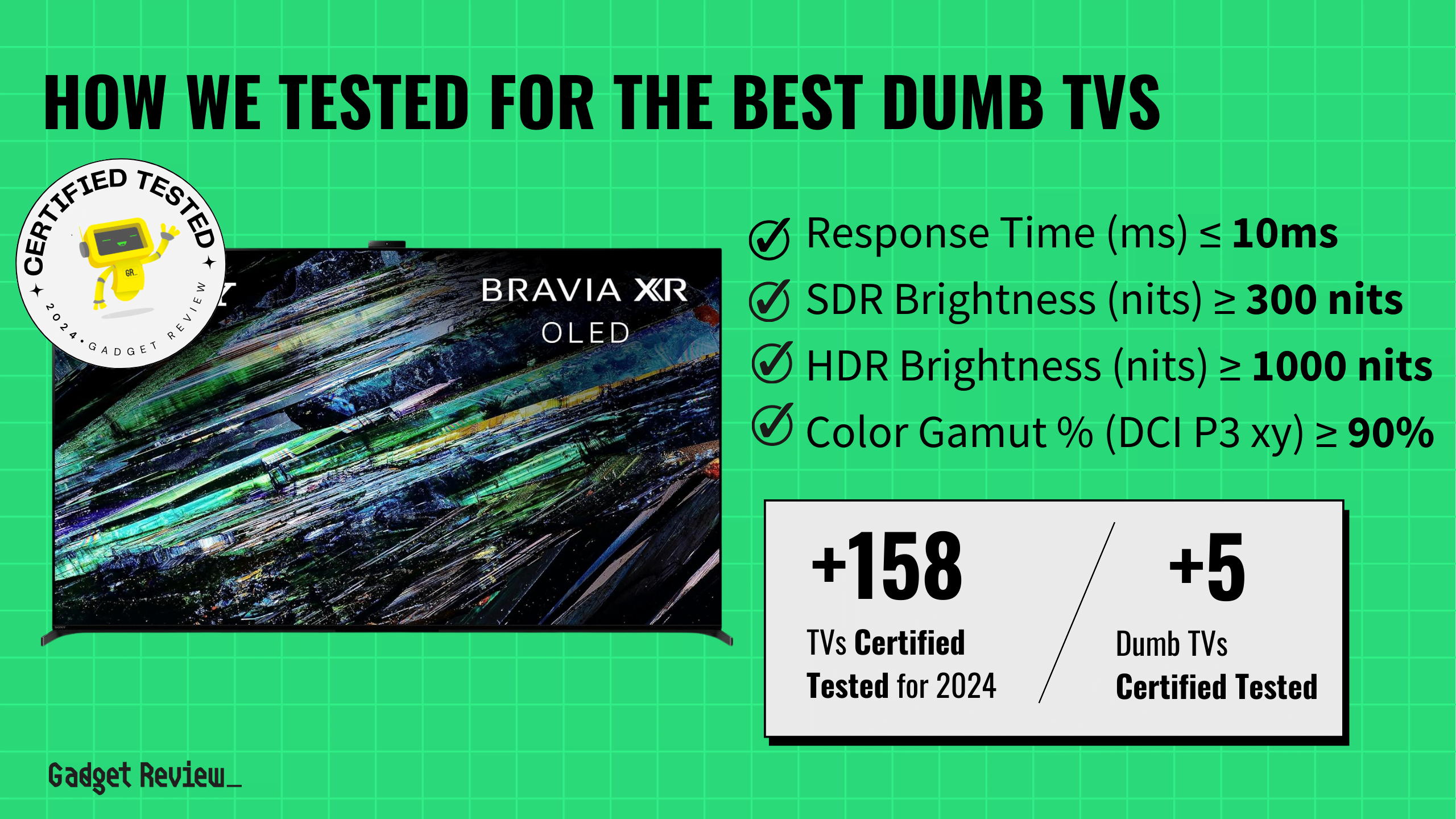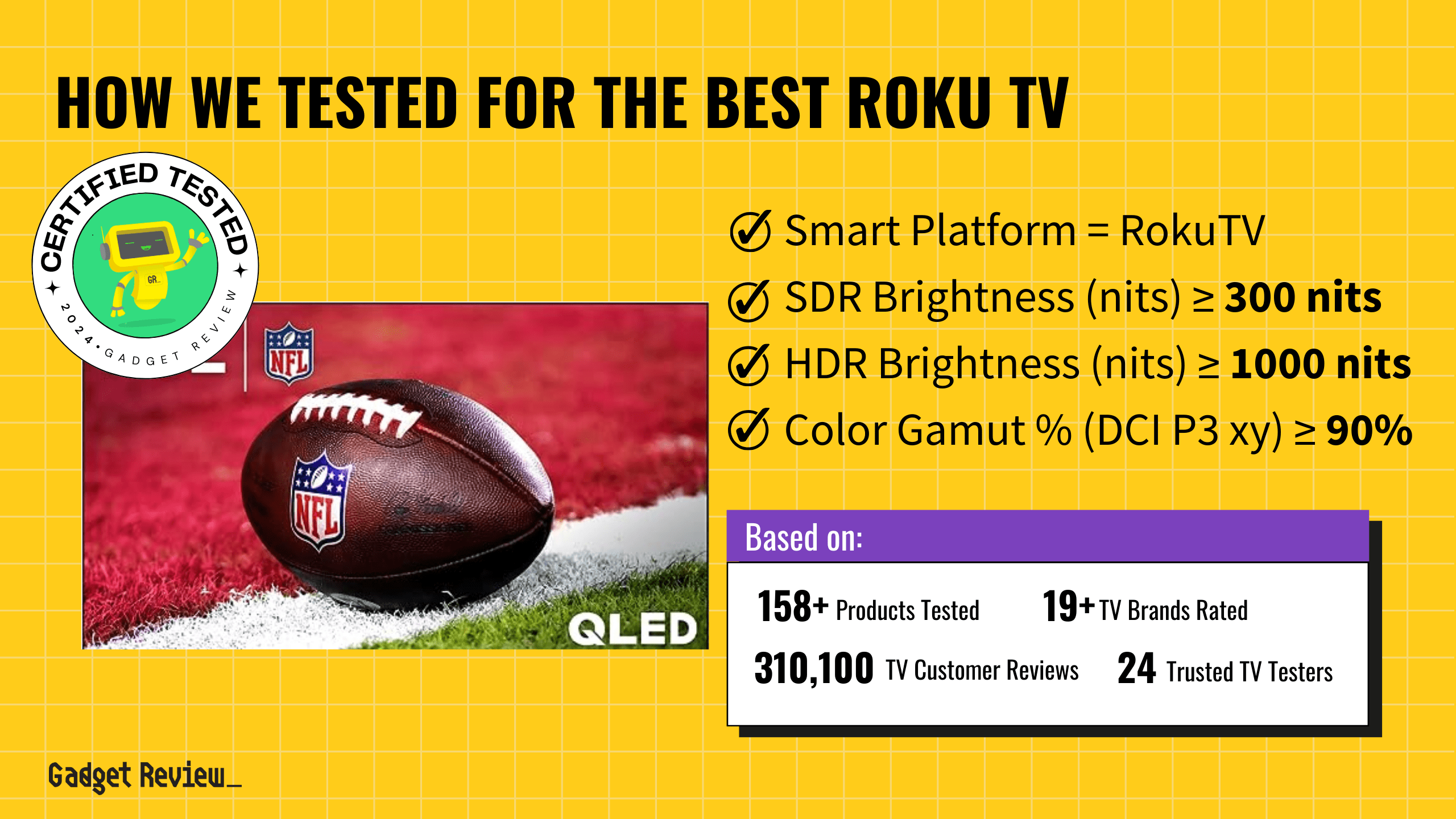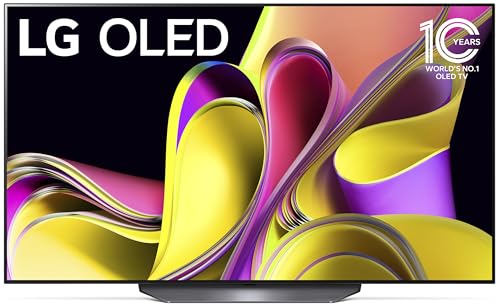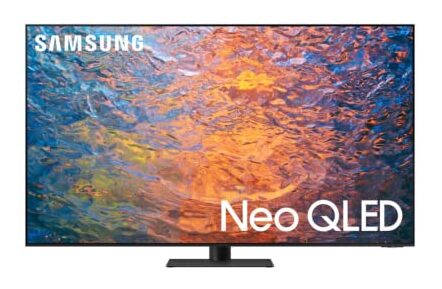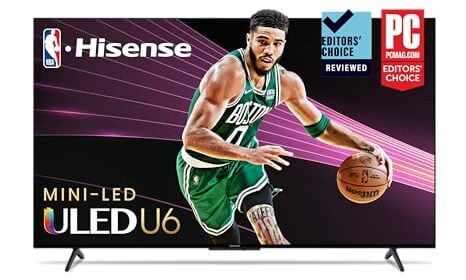If you’re looking for the best 8K TV, features like outstanding picture quality, high brightness levels, and advanced HDR support are essential. Top models offer superior upscaling for non-8K content, ensuring a sharp and immersive viewing experience. Out of the 158 TVs we evaluated, five stood out and secured a spot on our buying guide.
We analyzed 707,303 reviews, filtering out those that were unreliable or fake. Our unique approach combines verifying products as tested and using our proprietary True Score to highlight the best choices. This method ensures we recommend only the best TVs that deliver exceptional performance and value.
How Did We Rank the Best 8k TVs?
To assess how high or low quality a TV actually is for 8K content, one must evaluate specific testing criteria against reference industry standards. Using our thorough TV Testing Methodology, we determined there are 1 minimum spec and 1 criterion below (1 nice to have) that ensure your 8K content looks as good as the creator intended it.
Minimum Specifications
- Resolution: An 8K resolution, delivering ultra-high definition for crystal-clear visuals.
? “Nice To Haves”
- Contrast Ratio: 10,000:1 or higher, offering deep blacks and bright whites for an exceptional viewing experience.
We’ve redefined TV buying guides, setting us apart from any other site on the planet. Our unique approach combines in-house verification with a comprehensive dataset from over 200+ trusted sites, focusing on key testing metrics to rank the top-rated 8K TVs. We aggregate and analyze this data from 158+ TVs, ensuring our recommendations meet your specific needs. For the best 8K TV, this means delivering unparalleled resolution, exceptional brightness and color fidelity for an immersive viewing experience. Our commitment to unbiased reviews is powered by our ‘True Score’ system, targeting low quality and fake reviews. Commissions fund this mission. No bias. No BS.
Latest Updates
- 06/24/2023: Republished the list to include the best 8K TVs based on our True Score system.
Top 8K TVs For 2025
Prices accurate at the time of publishing

Best Overall

Runner Up

Best Value

Best Budget

Best Mid-Range

Premium Pick
Samsung QN900B Neo QLED TV
Best For 8K
The Samsung QN900B Neo QLED TV excels in gaming and bright environments. It offers unparalleled response time, luminance, and versatility for diverse viewing needs.
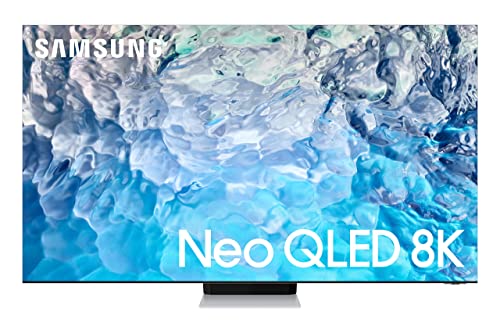
True Score
869110Experts
89155Customers
Absolutely Fresh
 $4,297.95
$4,297.95Read More
Snapshot
Reasons to Buy
- Great picture quality
- Excellent brightness
- Good motion handling
Reasons to Avoid
- Mediocre-performing built-in speakers
- Inconveniently placed input ports
- Limited 8K content
Specifications
Max Resolution 7860 x 4320 
Backlight Type Full-Array Refresh Rate 120 Hz Display Type QLED HDMI Inputs 4 
HDMI Type HDMI 2.1 HDR Format HDR10+ 
HomeKit Compatible No 
Number of Audio Channels 6.2.4 
Panel Type QD-OLED Screen size 65", 75", 85" 
Smart Platform Tizen 
Speaker Output 90 Watts 
Sync Technology Adaptive Sync, AMD FreeSync, G-Sync 
VRR Yes 
Works With Amazon Alexa, Bixby, Bluetooth, Google Assistant, Remote Control, SmartThings, Wi-Fi All Specs
Test Results
SDR Brightness (nits) 1,478 HDR Brightness (nits) 2,058 Color Gamut % (DCI P3 xy) 95.3633 Response Time (ms) 7.2 Contrast Ratio (x:1) 191,400 EOTF (600 nit delta) 0.0277 Color Gamut % (DCI P3 uv) 93.71 Color Gamut % (Rec 2020 xy) 65.53 Color Gamut % (Rec 2020 uv) 71.26 Color Gamut % (sRGB) 0 Color Gamut % (Rec 709) 0 Color Gamut % (BT.2020) 0 Color Gamut % (Adobe RGB) 0 Color Gamut % (BT.709) 0 Input Lag (ms) 9.5 Color Washout (Degrees) 34 Color Shift (Degrees) 21 Brightness Loss (Degrees) 48 Reflections (%) 2.6 Low-Freq Extension (Hz) 106.79 Freq Response StdDev @ 70db 2.42 Freq Response StdDev @ 80db 2.12 Weighted Total Harmonic Distortion @80db 0.182 Intermodulation Distortion @80db 0.63 EOTF (1000 nit delta) 0.0277 EOTF (4000 nit delta) 0.0242 All Tests
All Retailers
- $4,297.95
Availability
In StockFree Shipping
No
Our Verdict
If you’re looking for a top-tier 8K TV, the Samsung QN900B Neo QLED is particularly impressive for its best-in-class 7.2ms response time and low input lag of 9.5ms. These metrics are crucial for gaming enthusiasts and users seeking a seamless viewing experience, where every millisecond counts towards either victory in a fast-paced game or capturing the essence of a high-speed action movie.
This TV is also great for bright rooms, with its peak SDR brightness of 1478 nits and HDR brightness reaching up to 2058 nits, surpassing the similar Samsung QN900A 8K QLED with 1408 SDR and 1590 HDR nits of brightness. Such luminance levels ensure that the TV delivers exceptional picture quality, making it an excellent choice for rooms with varying light conditions and for viewers who crave depth and realism in HDR content. The high brightness levels paired with the sophisticated QLED technology bring out vibrant colors and deep contrasts, enhancing the overall viewing experience.
Furthermore, the TV’s minimal reflection rate of 2.6% and a decent color washout angle of 34 degrees indicate its versatility. Whether set up in a bright living room or a dimly lit home theater, the Samsung QN900B Neo QLED maintains its picture integrity from various viewing angles, making it a great fit for diverse setups. Combined with its cutting-edge 8K resolution and 120 Hz refresh rate, these characteristics make the TV suitable for immersive gaming sessions and enjoying cinematic content and everyday use as a high-performance computer monitor.
The Samsung QN900B Neo QLED TV doesn’t just excel in providing a premium gaming experience; its array of features and top-notch performance in brightness, reflections, and viewing angles make it a versatile choice for a wide range of applications, from home theaters to bright living spaces.
Read Less

Best Overall

Runner Up

Best Value

Best Budget

Best Mid-Range

Premium Pick
Samsung Q900TS
The Samsung Q900TS shines in 8K with its quick response time, low input lag, and striking brightness, offering an immersive experience for gamers and movie enthusiasts alike.
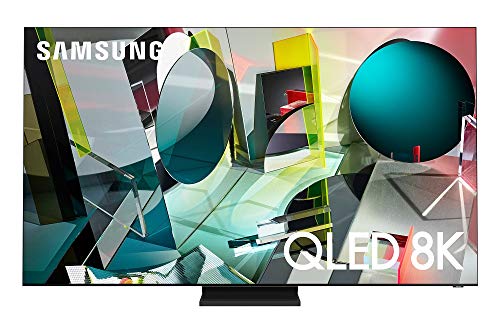
True Score
81823Experts
87239Customers
Absolutely Fresh
 SAVE $1,667$9,999.99$8,333.33
SAVE $1,667$9,999.99$8,333.33Read More
Snapshot
Reasons to Buy
- Real 8K with infinity screen
- 8K AI upscaling
- VRR, ALLM, and eARC
- HDMI 2.1 support
- Fast response time
- Low input lag
- Excellent reflection diffusion
- Great peak brightness
- Judder removal
Reasons to Avoid
- Poor viewing angles
- Dithering effects with 8K
- Cross-hatching effects with 4K
- Low frame rate content appears to stutter
- Cheaply built stand
- VRR doesn’t work with 1440P resolution
- No Dolby Vision HDR
- No USB 3.0 port
Specifications
Max Resolution 7860 x 4320 
Backlight Type Full-Array Refresh Rate 120 Hz Display Type LED HDMI Inputs 4 HDR Format HDR10, HDR10+ 
HomeKit Compatible No 
LED Panel Type VA Screen size 65" 
Smart Platform Tizen 
Sync Technology AMD FreeSync 
VRR Yes 
Works With Amazon Alexa, Bixby, Bluetooth, Google Assistant, Remote Control, SmartThings, Wi-Fi All Specs
Test Results
SDR Brightness (nits) 1,003 HDR Brightness (nits) 1,409 Color Gamut % (DCI P3 xy) 91.55 Response Time (ms) 8.8 Contrast Ratio (x:1) 1,594 EOTF (600 nit delta) 0 Color Gamut % (DCI P3 uv) 94.35 Color Gamut % (Rec 2020 xy) 67.61 Color Gamut % (Rec 2020 uv) 73.62 Color Gamut % (sRGB) 0 Color Gamut % (Rec 709) 0 Color Gamut % (BT.2020) 0 Color Gamut % (Adobe RGB) 0 Color Gamut % (BT.709) 0 Input Lag (ms) 10.1 Color Washout (Degrees) 26 Color Shift (Degrees) 25 Brightness Loss (Degrees) 47 Reflections (%) 2.2 Low-Freq Extension (Hz) 100.79 Freq Response StdDev @ 70db 3.95 Freq Response StdDev @ 80db 5.02 Weighted Total Harmonic Distortion @80db 0.819 Intermodulation Distortion @80db 0.87 EOTF (1000 nit delta) 0 EOTF (4000 nit delta) 0 All Tests
All Retailers
- $8,333.33$10,000Save $1,667
Availability
In StockFree Shipping
Yes Availability
Free Shipping
Our Verdict
If you’re in the market for a premium 8K TV that doesn’t just dazzle with resolution, the Samsung Q900TS also impresses with performance. With its notable response time of 8.8 ms and input lag of 10.1 ms, it stands out as a solid choice for those who value seamless interaction, whether for high-speed action movies or competitive gaming sessions. These metrics are crucial in a television where every millisecond counts, ensuring that the on-screen action is as smooth as it is sharp.
The Q900TS has an SDR brightness of 1003 nits, making it more than capable of delivering vivid and lifelike pictures even in brightly lit environments. This level of brightness, coupled with its HDR capability of 1409 nits, ensures that the TV can produce a wide range of colors and deep contrasts, essential for true-to-life picture quality. This makes the Q900TS an excellent choice for HDR content aficionados and gamers looking to fully immerse themselves in their virtual worlds.
However, it’s important to consider all aspects of performance. The Samsung QN900 B Neo QLED TV’s color washout isn’t great at 26 degrees, worse than the 34 degrees of the Samsung QN900B Neo QLED TV. This might be a concern for setups where viewers are seated at wide angles. Yet the TV’s strengths in other areas, such as its low reflection percentage of 2.2%, make it well-suited for diverse viewing environments, from bright living rooms to dark home theaters.
The Samsung Q900TS’s response time, input lag, and brightness strengths make it a compelling choice for various uses. From gaming to movie watching, this TV has the potential to excel, making it a worthy contender for those looking to upgrade to an 8K experience without compromising on quality and performance.
Read Less
DID YOU KNOW 87% OF TV REVIEWERS ARE UNTRUSTWORTHY?
Our research found 28 of 210 TV reviewers can be trusted, and shockingly 1 out of 3 on Google Page 1 were fake reviews showing no proof of test claims. See our Expose and Trust List. This is why Gadget Review is committed to calculating the most accurate product scores on the web.
To do this, we give every TV review site a Trust Rating, which measures how trustworthy the site and their testing claims are. We then leverage AI & a machine learning model to combine and calculate the Trust Rating with data from experts and consumers to deliver the True Score, the web’s most accurate product quality rating.

Best Overall

Runner Up

Best Value

Best Budget

Best Mid-Range

Premium Pick
Samsung QN800A
The Samsung QN800A has low reflectivity, impressive HDR, and quick response time, making it a top pick for a diverse 8K experience on a budget.
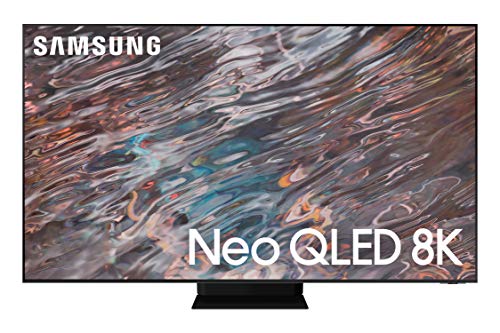
True Score
79802Experts
86164Customers
Mixed Reviews
 $1,749.00
$1,749.00Read More
Snapshot
Reasons to Buy
- High 8K resolution
- Excellent peak HDR/SDR brightness
- HDMI 2.1 support on all 4 ports
- Great reflection handling
- FreeSync VRR support
- Quick response times
Reasons to Avoid
- Low contrast ratio
- Narrow viewing angles
- No USB 3.0 ports
- Not much content available in 8K
Specifications
Max Resolution 7860 x 4320 
Backlight Type Full-Array Refresh Rate 120 Hz Display Type LED HDMI Inputs 4 HDR Format Yes 
HomeKit Compatible No 
LED Panel Type Neo QLED Screen size 65", 75", 85" 
Smart Platform Tizen 
Sync Technology AMD FreeSync, G-Sync 
VRR Yes 
Works With Amazon Alexa, Bixby, Bluetooth, Google Assistant, Remote Control, SmartThings, Wi-Fi All Specs
Test Results
SDR Brightness (nits) 1,343 HDR Brightness (nits) 1,452 Color Gamut % (DCI P3 xy) 83.46 Response Time (ms) 8.7 Contrast Ratio (x:1) 1,613 EOTF (600 nit delta) 0 Color Gamut % (DCI P3 uv) 88.99 Color Gamut % (Rec 2020 xy) 60.04 Color Gamut % (Rec 2020 uv) 65.25 Color Gamut % (sRGB) 0 Color Gamut % (Rec 709) 0 Color Gamut % (BT.2020) 0 Color Gamut % (Adobe RGB) 0 Color Gamut % (BT.709) 0 Input Lag (ms) 10.3 Color Washout (Degrees) 38 Color Shift (Degrees) 21 Brightness Loss (Degrees) 46 Reflections (%) 2.1 Low-Freq Extension (Hz) 119.87 Freq Response StdDev @ 70db 2.83 Freq Response StdDev @ 80db 2.87 Weighted Total Harmonic Distortion @80db 0.734 Intermodulation Distortion @80db 0.58 EOTF (1000 nit delta) 0 EOTF (4000 nit delta) 0 All Tests
All Retailers
- $1,749.00
Availability
In StockFree Shipping
No
Our Verdict
If you’re in the market for an 8K TV with a compelling mix of features and performance without breaking the bank, the Samsung QN800A is an impressive option, particularly for its exceptional handling of reflections at a mere 2.1%. This ensures that your viewing experience remains pristine even in well-lit environments, even though it’s more budget-friendly than other models on our list.
The Samsung QN800A impresses with its HDR brightness of 1452 nits, a key feature for enhancing HDR content with vivid details and superior picture quality. Its SDR brightness, at 1343 nits, closely trails the 1408 nits of the Samsung QN900A 8K QLED and ensures vibrant and detailed visuals under most conditions. Despite its 38-degree color washout, the QN800A maintains good visuals from various viewing angles. Its low reflectivity makes the QN800A a versatile option for everything from gaming and home theaters to viewing in bright rooms.
Moreover, its rapid response time of 8.7 ms is noteworthy. It minimizes motion blur and provides a smoother image during fast-paced action scenes, making it an attractive option for action movie enthusiasts and gamers alike. Furthermore, with an input lag of just 10.3 ms, it ensures a highly responsive gaming experience, crucial for both casual and competitive gaming scenarios.
Overall, the Samsung QN800A is a TV that’s well-suited for a broad range of entertainment needs, offering standout features in reflection handling and HDR brightness. Its performance across key criteria makes it a worthy contender for those seeking a high-quality 8K viewing experience without the premium price tag of top-tier models.
Read Less

DON’T SEE WHAT YOU’RE LOOKING FOR?
When looking for the best small TVs, consider models that offer sharp picture quality and good connectivity options. For those with well-lit living spaces, a great TV for a bright room is essential to avoid glare and maintain clear visibility. If you’re seeking a large screen, 60-inch TVs provide an immersive viewing experience without overwhelming the room.
Top-tier LG TVs are known for their cutting-edge technology and stunning visuals, making them a reliable choice for any setup. For the ultimate viewing experience, an excellent 4K TV delivers crystal-clear resolution and vibrant colors, ensuring you enjoy every detail of your favorite shows and movies.

Best Overall

Runner Up

Best Value

Best Budget

Best Mid-Range

Premium Pick
TCL 6 Series 8K Roku
The TCL 6 Series 8K Roku TV offers impressive HDR brightness and features for its price, making it a solid choice for budget-conscious home theater and gaming enthusiasts.
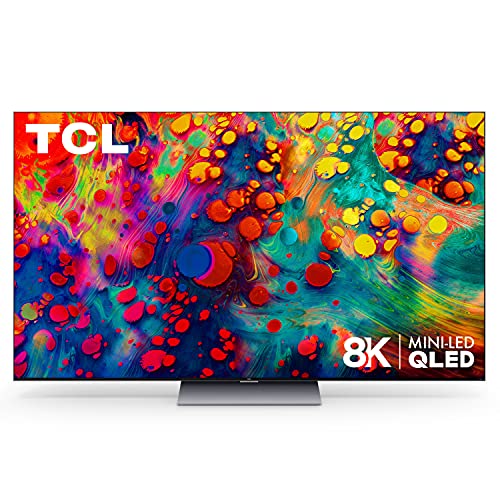
True Score
76776Experts
82565Customers
Mixed Reviews
 SAVE $210$1,399.99$1,189.99
SAVE $210$1,399.99$1,189.99Read More
Snapshot
Reasons to Buy
- Excellent picture quality
- High brightness and contrast
- Low-tested response time and input lag
- 120 Hz refresh rate and VRR
Reasons to Avoid
- Narrow viewing angle
- Mild blooming
Specifications
Max Resolution 7860 x 4320 
Backlight Type Full-Array Refresh Rate 120 Hz 
Curved Screen No Display Type QLED HDMI Inputs 4 
HDMI Type – HDR Format Dolby Vision 
LED Panel Type Mini-LED QLED Screen size 55", 65", 75", 85" 
Smart Platform Roku TV 
Sync Technology n/a 
VRR n/a All Specs
Test Results
SDR Brightness (nits) 524 HDR Brightness (nits) 1,215 Color Gamut % (DCI P3 xy) 0 Response Time (ms) 0 Contrast Ratio (x:1) 607,340 EOTF (600 nit delta) 0 Color Gamut % (DCI P3 uv) 0 Color Gamut % (Rec 2020 xy) 0 Color Gamut % (Rec 2020 uv) 0 Color Gamut % (sRGB) 0 Color Gamut % (Rec 709) 99.8 Color Gamut % (BT.2020) 0 Color Gamut % (Adobe RGB) 0 Color Gamut % (BT.709) 0 Input Lag (ms) 12.1 Color Washout (Degrees) 0 Color Shift (Degrees) 0 Brightness Loss (Degrees) 0 Reflections (%) 0 Low-Freq Extension (Hz) 0 Freq Response StdDev @ 70db 0 Freq Response StdDev @ 80db 0 Weighted Total Harmonic Distortion @80db 0 Intermodulation Distortion @80db 0 EOTF (1000 nit delta) 0 EOTF (4000 nit delta) 0 All Tests
All Retailers
- $1,189.99$1,400Save $210
Availability
In StockFree Shipping
No - $1,626.50$4,000Save $2,373
Availability
In StockFree Shipping
Yes Availability
Free Shipping
Our Verdict
The TCL 6 Series 8K Roku TV stands out as a more budget-friendly option, particularly notable for its HDR brightness, which, although the lowest among the models in our guide, still delivers a commendable performance at 1215 nits. This brightness level is crucial for delivering more lifelike and vibrant images in HDR content, making it a key spec to consider for those searching for an 8K television that doesn’t compromise on picture quality for a more accessible price point.
Despite having the lowest HDR and SDR brightness at 525 nits, this TV still impresses with its value proposition. It features a 120 Hz refresh rate and four HDMI ports, crucial for 8K TVs to ensure fluid motion in fast-action content and plenty of connections for your devices. While its 12.1 ms input lag is higher than the similarly priced Samsung QN800A’s 10.3 ms, it’s more than adequate for gaming and movie viewing. Additionally, the Roku smart platform adds significant appeal, providing an intuitive interface and a wide array of streaming options, making it a compelling choice for an all-around entertainment centerpiece.
Given its HDR performance, the TCL 6 Series 8K Roku TV could be particularly effective for home theater enthusiasts who want the immersive experience of high-dynamic-range content without the premium price tag. While it might not be the top choice for settings with significant ambient light, it still holds potential for various use cases. Its high refresh rate and input lag could make it a viable option for gaming, ensuring that fast-moving content is rendered smoothly and responsively, providing a satisfying experience across various entertainment needs.
Read Less
Category Snapshot
TVs
- Total Brands/Products Tested
17 Brands, 158 Products
- Top 2 Brands
LG, Hisense
- Price Range (Budget-Premium)
$400-$2000
- Average True Score
76.65
- Important Test Criteria
Brightness (cd/m2)
Contrast Ratio (1000:1) - Most Trusted Testers

- Top TV Experts
- Recommended Retailer

- Typical Warranty
1 year
- Covered by Insurance
Yes – AKKO
- Test Methodology

Best Overall

Runner Up

Best Value

Best Budget

Best Mid-Range

Premium Pick
Samsung QN900A 8K QLED
The Samsung QN900A 8 K QLED excels at top-notch SDR and HDR viewing with minimal reflections, making it ideal for varied entertainment needs.
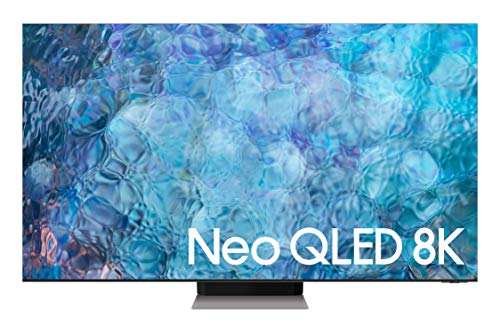
True Score
72731Experts
78161Customers
Mixed Reviews
 $2,598.95
$2,598.95Read More
Snapshot
Reasons to Buy
- Fast Response Time
- Pretty Good Viewing Angles
- Great Brightness
- Nearly Bezel-less
Reasons to Avoid
- Significant Blooming
- Low Contrast
- Screen is Too Reflective
Specifications
Max Resolution 7860 x 4320 
Backlight Type Full-Array Refresh Rate 120 Hz Display Type LED HDMI Inputs 4 HDR Format HDR10+ 
HomeKit Compatible No 
LED Panel Type Neo QLED Screen size 65", 75", 85" 
Smart Platform Tizen 
Sync Technology AMD FreeSync, G-Sync 
VRR Yes 
Works With Amazon Alexa, Bixby, Bluetooth, Google Assistant, Remote Control, SmartThings, Wi-Fi All Specs
Test Results
SDR Brightness (nits) 1,408 HDR Brightness (nits) 1,590 Color Gamut % (DCI P3 xy) 93.63 Response Time (ms) 10.2 Contrast Ratio (x:1) 1,658 EOTF (600 nit delta) 0 Color Gamut % (DCI P3 uv) 96.01 Color Gamut % (Rec 2020 xy) 67.58 Color Gamut % (Rec 2020 uv) 70.84 Color Gamut % (sRGB) 0 Color Gamut % (Rec 709) 0 Color Gamut % (BT.2020) 0 Color Gamut % (Adobe RGB) 0 Color Gamut % (BT.709) 0 Input Lag (ms) 10.1 Color Washout (Degrees) 36 Color Shift (Degrees) 25 Brightness Loss (Degrees) 47 Reflections (%) 2.3 Low-Freq Extension (Hz) 119.87 Freq Response StdDev @ 70db 3.88 Freq Response StdDev @ 80db 3.47 Weighted Total Harmonic Distortion @80db 0.481 Intermodulation Distortion @80db 0.64 EOTF (1000 nit delta) 0 EOTF (4000 nit delta) 0 All Tests
All Retailers
- $2,598.95
Availability
In StockFree Shipping
- $3,477.00
Availability
In StockFree Shipping
No
Our Verdict
If you’re looking for an 8K TV that excels in both SDR and HDR content, the Samsung QN900A 8K QLED is an excellent option. With its impressive SDR brightness of 1408 nits and HDR brightness peaking at 1590 nits, this TV promises a luminous viewing experience that brings out the best in your favorite shows and movies. Such brightness levels ensure vivid pictures in well-lit environments and contribute to more profound and immersive HDR experiences, making this TV a solid choice for enthusiasts seeking top-notch picture quality.
This TV impresses with its 2.3% reflection rate, only slightly surpassed by the Samsung QN800A’s 2.1%. It is ideal for bright rooms because it minimizes ambient light reflections for a more immersive viewing experience. Its color fidelity also stands strong up to 36 degrees off-axis, ensuring consistent picture quality from various angles. However, with a response time of 10.2 ms and an input lag of 10.1 ms, it’s better suited for casual viewing than for competitive gaming, where faster response times are crucial.
Beyond its prowess in handling bright scenes and mitigating reflections, the Samsung QN900A also demonstrates versatility across various use cases. Its high SDR and HDR brightness levels make it an excellent candidate for home theaters or living rooms that bathe in natural light, ensuring that the depth and detail of 8K content are consistently maintained. Although it may not be the premier choice for hardcore gaming due to its response time, it remains a compelling option for casual gaming, movie nights, and everyday TV watching, offering a balanced blend of quality and performance for a wide range of entertainment needs.
Read Less
Which Criteria Matters for Testing Best 8k TVs?
By focusing on these criteria (1 nice to have), anyone can quickly and easily compare these TVs and how they’ll perform. This helps you make an informed decision and purchase a 8K TV that has a contrast ratio of more than 10,000.
| CRITERIA | RANGE | REQUIRED | DEFINITION |
|---|---|---|---|
| Contrast Ratio | >= 10,000 | Yes | The ratio between the brightest white and darkest black that the screen can display. |
Our Trusted Data Sources
(Publication category Score is 80%+)
We looked at 210+ TV reviewers and while 24 are trustworthy (60%+ Trust Rating), we only use data from the testers that are “very trusted” which means a Trust Rating above 70%. The three we have listed below are our most trusted for TVs, along with our own in-house TV expert.
- Evan Shepard – Gadget Review
- Matthew Lopes – RTings, MuckRack
- Will Greenwald – PCMag, MuckRack, Twitter
- David Katzmaier – CNET, MuckRack, Twitter
Interested in a comprehensive analysis of our data sources? We’ve got you covered. Below, you’ll find a detailed list of every TV review website we’ve identified, organized by their respective Trust Ratings from highest to lowest. But we didn’t stop there. We’ve meticulously reviewed each publication and verified the data by checking whether the authors have bio links to MuckRack or LinkedIn. We’re committed to not only checking the facts but ensuring their veracity.
Best 8k TVs Test Data & Results
1. Contrast Ratio Test Results
For small TV enthusiasts, a solid contrast ratio is crucial for enjoying your favorite TV shows or movies, especially in darker settings. This feature directly impacts how lifelike and dynamic the picture appears on your screen, ensuring that dark scenes are displayed with clear, crisp blacks instead of murky grays and bright scenes retain their detail without appearing washed out.
Put simply, the contrast ratio is all about the range of luminance a TV can produce, from the deepest blacks to the brightest whites. It’s what brings depth to the image, enhancing the realism of every scene. Watching a movie in the dark, for example, the difference between a TV with a poor contrast ratio and one with a high ratio is stark: the former struggles, blending shadows into a flat gray, while the latter delivers true black, making night scenes more immersive and detailed.
Ideally, a contrast ratio of 10,000:1 is what you should aim for in a small TV. This level of luminance variance ensures that you’re getting a picture quality that can handle the nuances of lighting in any scene, providing a viewing experience that’s both rich and engaging. Note: OLED TVs have infinite contrast ratio, indicated by “0.”
Below are the top small TVs, ordered by contrast ratio, all exceeding our testing criteria.
Contrast Ratio
>=10,000:1
Acceptable range of performance
Definition: Difference between the darkest black and the brightest white a screen can display.
Units of Measurement: cd/m2
Tools to Measure: Luminance meter
Why It’s Important:
A higher contrast ratio delivers deeper blacks, enhancing content definition, especially in darker rooms.
Contrast Ratio (higher is better)
Best 8k TVs: Mistakes To Avoid
- Ignoring Content Availability: Purchasing an 8K TV without considering the availability of 8K content can lead to underutilizing the TV’s capabilities. Currently, there is limited 8K content available, so make sure to understand what you’ll actually be able to watch in 8K.
- Not Considering Screen Size: Buying an 8K TV with a small screen may not showcase the benefits of 8K resolution. The difference between 4K and 8K is more noticeable on larger screens. Ideally, opt for a screen size of at least 65 inches to appreciate the enhanced resolution.
- Overlooking HDMI 2.1: Choosing an 8K TV without HDMI 2.1 ports can limit the TV’s ability to handle high-bandwidth 8K content and advanced gaming features. Ensure the TV has HDMI 2.1 to support future 8K sources and gaming consoles effectively.
- Ignoring HDR and Brightness Capabilities: Focusing solely on resolution without considering HDR and brightness performance can lead to disappointing picture quality. Look for an 8K TV with robust HDR capabilities and high peak brightness for vibrant and dynamic visuals.
The Best 8k TVs Tests Compared
Product |
True Score
|
SDR Brightness
|
HDR Barightness
|
Color Gamut
|
Response Time
|
Contrast Ratio
| |
|---|---|---|---|---|---|---|---|
| 86 |
|
|
|
|
| $4,297.95 |
81 |
|
|
|
|
| $8,333.33 $10,000 $1,667 | |
79 |
|
|
|
|
| $1,749.00 | |
76 |
|
|
|
|
| $1,189.99 $1,400 $210 | |
72 |
|
|
|
|
| $2,598.95 |


